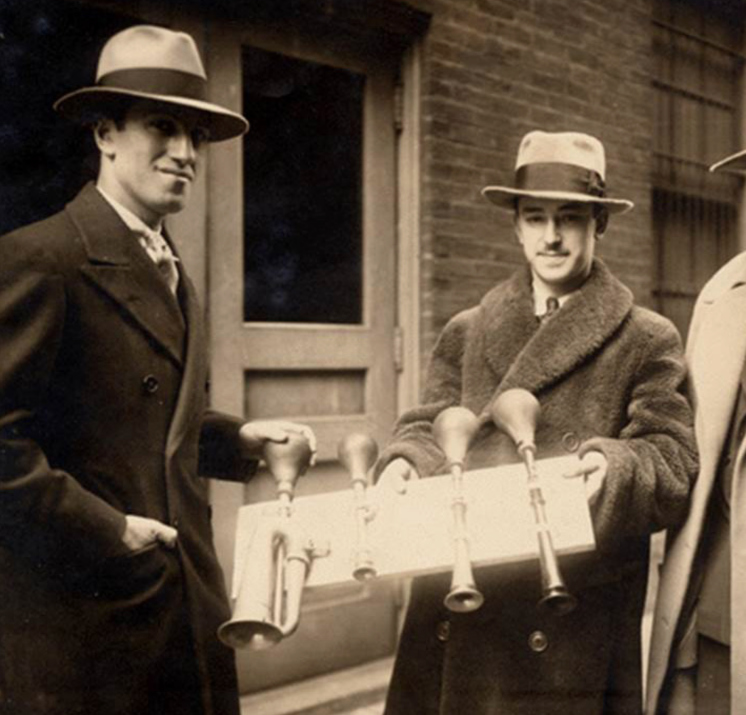There are often moments where you look at a score and wonder if you are playing what the composer intended. With Gershwin’s American in Paris it turns out that we were not!
Gerswhin was painting a musical soundscape when he created American in Paris, and to really create the atmosphere of a busy Parisian street he used some non-standard instruments in his orchestration – including the taxi horn. The score requires 4 taxi horns in the percussion section with markings indicating when to play horns with ‘A,’ ‘B,’ ‘C,’ and ‘D’.
Until very recently, the belief was that the markings ‘A,’ ‘B,’ ‘C,’ and ‘D’ were the pitches of the horns. Turns out that was probably not the case.
Gerswhin died 9 years after the premiere of American in Paris, but was involved in a 1929 recording that has unlocked the puzzle. The taxi horns used in the 1929 recording are the same taxi horns Gerswhin had brought back from Paris specifically for the piece’s premiere in 1928. Turns out ‘A,’ ‘B,’ ‘C,’ and ‘D’ were a short hand for which taxi horn to use.

This discovery was made by Mark Clague, musicologist at the U-M School of Music, Theatre & Dance, is currently editing a critical edition of George and Ira Gershwin’s music through The Gershwin Initiative at the University of Michigan School of Music, Theatre & Dance. The Gershwin Initiative, a partnership with the Gershwin family, is an ongoing examination of the Gershwin’s music initiated by Todd Gershwin, a U-M alumnus, the grandnephew of George and Ira Gershwin, and the son of Marc George Gershwin.
When listening to the February 4, 1929 Victor Recording supervised by the composer, it is clear that the circled ‘A,’ ‘B,’ ‘C,’ and ‘D’ letters are not the pitches Gershwin intended. The taxi horns on this recording sound more dissonant. After further investigation, Clague argues that the correct pitches should be Ab and Bb (above middle C), high D (a third above that) and low A (a third below middle C).
The beauty of Gerswhin’s music is that playing horns tuned to ‘A,’ ‘B,’ ‘C,’ and ‘D’ work incredibly well in the piece.
No matter what the intentions with the horns were, we can all agree it’s still a much loved piece of music performed multiple times a year all over the globe.
That’s definitely something to toot your horn about!